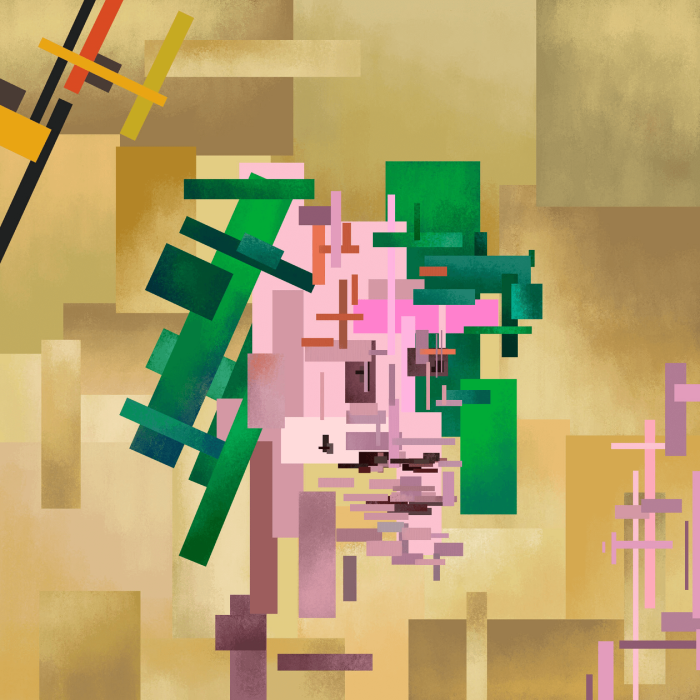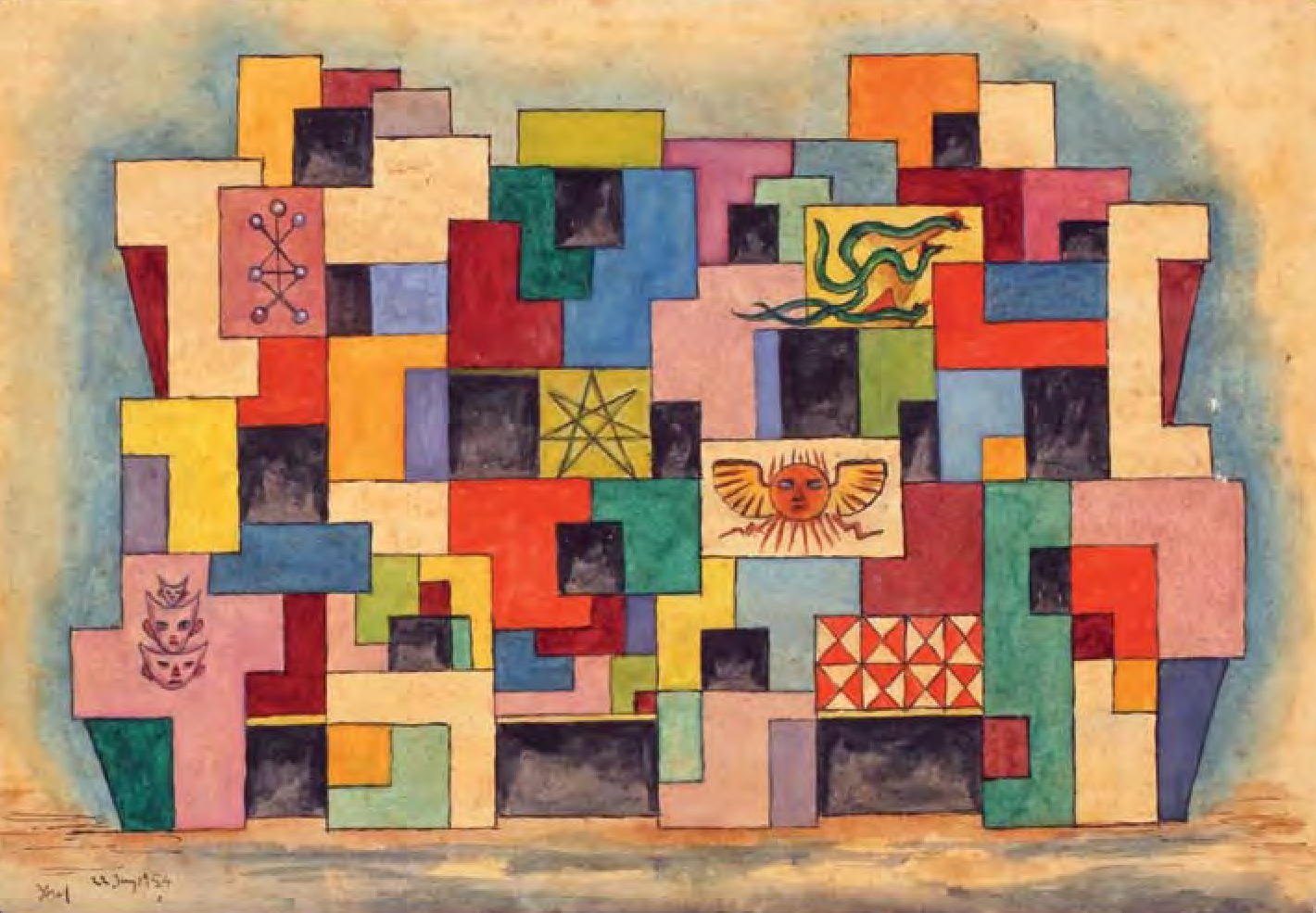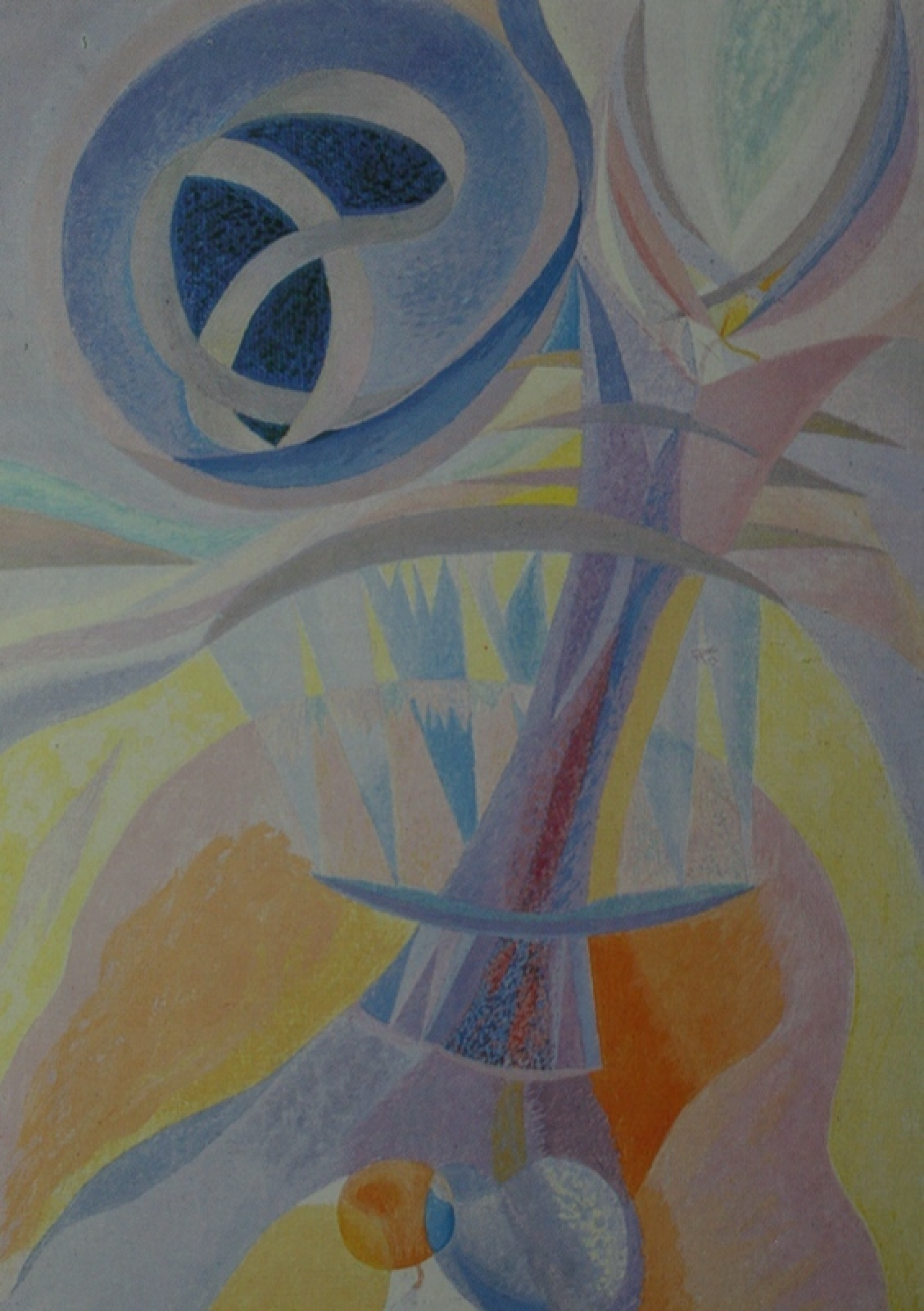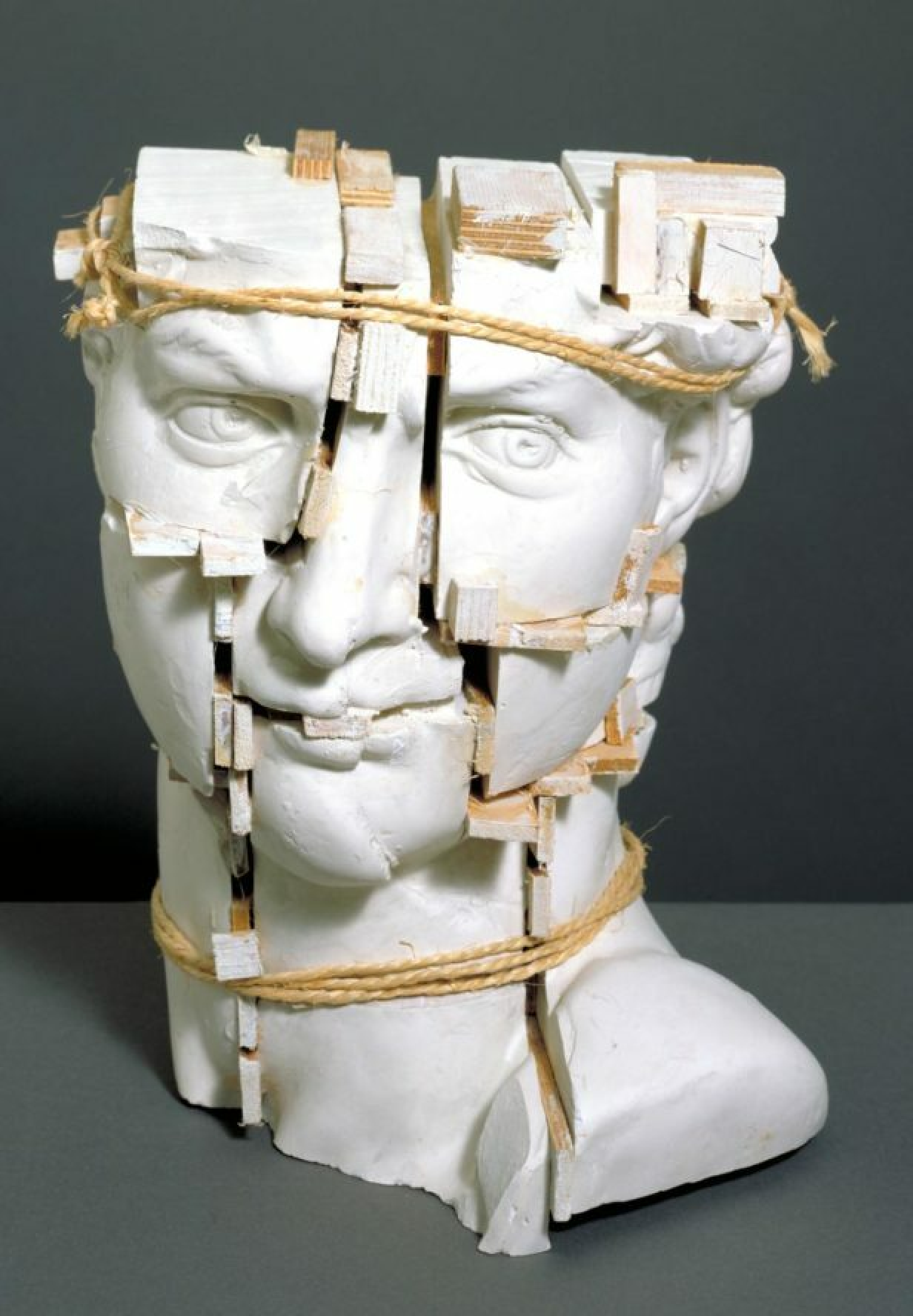SupremePunk #089

Shadow
This Punk is inspired by CryptoPunk #4832 and the work of Xula Solar. Xul Solar is an Argentine painter, sculptor, writer and musician. He played a major role in the development of avant-garde art in Argentina. His style has absorbed the diverse interests of the artist, his desire to comprehend the mysteries of the past and the future, the desire for universal harmony.

Xula Solar — The project of the facade of the city, 1954
The inspiration for Punk was his work "The project of the facade of the city". The painting shows a colorful, fragmented space depicting fantasy architecture. The symbols drawn on the planes refer the viewer to Solar's fascination with astrology and magic.
The SupremePunk is made in juicy, contrasting colors that blend harmoniously with the background color. The total amount of work consists of modular planes, as if strung on an axis. Shadows on planes create a feeling of airiness and spaciousness. These planes are like streams, they collide and intersect in the general rhythm of the composition. The green planes create a bright spot that concentrates the viewer's attention on the object and focuses it on the overall shape and rhythm.

Tatiana Glebova — Flying forms, 1987
Tatiana Glebova is a Soviet artist, graphic artist and illustrator. Starting from the studio of the artist Filonov, over time she came to a recognizable and unique graphic style. Her later work is a unique synthesis of the basic principles of suprematism, analytical art, in which the artist worked for many years, and her own unique view of the world around her.
The abstract canvas "Flying Forms" from the cycle of the same name demonstrates the theory of the bowl-dome space in action. In it, a complex plexus of heavenly life forces connects with earthly forms through visible energy flows originating in the earth, like a tree, and spreading its crown far into space. The works of this cycle are characterized by a soft pastel palette and a voluminous air space. Just like Glebova, SupremePunk shows the flow of thoughts and spaces that intertwine and form a special space.
The painting conveys the image of a person, fragmented and reassembled, piece by piece. The artist dissects his object and tries to rethink it in a new way, creating a unique image. A similar technique was used by the sculptor Paolotia.

Eduardo Paolotii — David, 1987
Eduardo Paolotii is a contemporary Scottish sculptor and graphic artist. His works became the starting point for the development of pop art.
The artist once noticed the plaster head of David Michelangelo in a shop window, where it stood on a wooden chest of drawers. This strange combination inspired Eduardo Paolotii, and he created a copy of this cast, cut it into several parts, between which he placed wooden inserts. The artist connected everything together with a rope. The unusual composition hints at a protest against academicism in art. It is associated with the riots that students of the Munich Academy started in 1972, and during which a large collection of antique plaster sculptures stored at the academy was damaged.
In the same way, SupremePunk shows a protest against academicism and focuses on planar graphics, which helps to take a fresh look at the world around us and attitudes.

Buy

Gallery:
CryptoPunk #4832 that has been taken as a base

Your transaction is in progress

You have connected to the wrong network

Transaction is successful!


